How Self-Drilling Anchor Bolts Drill and Grout Simultaneously
Time:2025-11-17From:sinorock View:
In geotechnical engineering, traditional anchoring methods require drilling, rod insertion, and grouting as separate steps—a slow process prone to failure in weak, fractured, or collapse-prone ground. Self-drilling anchor bolts (SDA bolts) have revolutionized this process by combining drilling and grouting into a single, seamless operation. This article explains the mechanism, step-by-step installation process, advantages, and practical applications of this innovative technology.

1. What Is a Self-Drilling Anchor bolt?
A self-drilling rock bolt is a hollow, threaded bar that integrates the functions of a drill rod, a reinforcing bar, and a grout pipe into one unit. Its front end is equipped with a disposable drill bit, while the tail end connects simultaneously to the drilling rig and grout pump via specialized couplers. This integrated design forms the physical basis for simultaneous drilling and grouting.
Key components include:
Hollow Core Bar: High-strength seamless tube for drilling and grout delivery.
Disposable Drill Bit: Alloy bit with grout ports at the tip.
Swivel Grout Adapter: Connects to the rig and pump to enable live grouting.
Coupling Sleeves: Connect bar sections with sealed threads.
2. Step-by-Step Installation Process
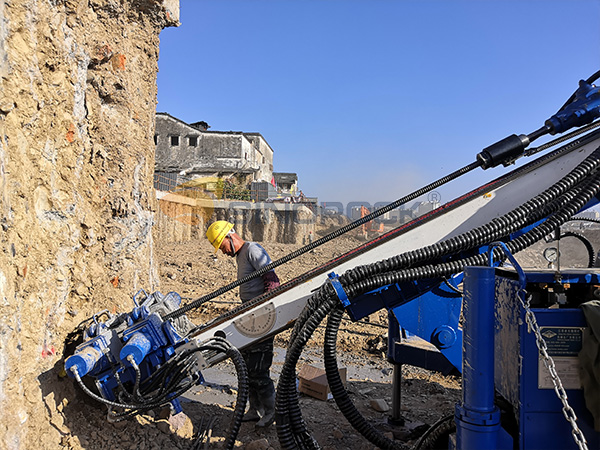
The typical installation procedure for self-drilling anchor bolts is as follows:
Attach the drill bit and accessories.
Position the drilling rig and clamp the anchor bar.
Begin drilling while pumping grout (if using simultaneous mode).
Grout flows through the hollow bar and exits through the drill bit.
Reach the target depth.
Perform final pressure grouting.
Install plate and nut to complete anchoring.
This streamlined workflow significantly reduces labor time and construction complexity, leveraging rotary drilling and real-time grouting.
Step 1: Setup
Attach a suitable drill bit to the front of the hollow bar.
Connect the tail end to the drilling rig via a drive chuck (dolly) and to a high-pressure grout pump using a rotary grout swivel.
The rig delivers torque of 50–200 N·m, while the grout pump remains on standby at 1–3 MPa.
Step 2: Start Drilling and Grouting
Activate the rig: the bar spins and advances, and the bit cuts the soil or rock.
Start the grout pump immediately. Cement grout (W/C 0.45–0.55) flows through the hollow core and exits via the bit’s grout ports.
Maintain a flow rate of 5–15 L/min to prevent clogging.
Step 3: Grout’s Dual Role

As grout exits the ports, it fills the borehole behind the drill bit. This step is critical:
Wall Protection: The grout coats the bolt and contacts the borehole wall, forming a protective sheath that stabilizes the hole and prevents collapse in weak ground.
Cuttings Removal: Grout mixes with drill cuttings (rock flour and debris) and flushes them out through the annular space between the bolt and the borehole wall.
Wet Drilling Benefits: Grout cools the drill bit and enhances penetration rate.
Step 4: Continuous Advancement
Add bar sections every 3–6 m using couplings tightened to a torque of at least 300 N·m.
Drilling and grouting continue in parallel until the target depth is reached (typically 6–30 m).
Step 5: Full Grouting and Bonding
Stop rotation upon reaching the target depth and continue grouting for 1–3 minutes.
Grout fills from bottom-up, displacing air, water, and debris.
Stop when grout returns at the collar or when pressure stabilizes.
After curing, a fully bonded, high-strength anchor is formed.
3. Key Advantages of Self-Drilling Anchor bolts

Compared to conventional methods, simultaneous drilling and grouting offers multiple benefits:
Superior Borehole Stability: Ideal for sandy, silty, or fractured ground where conventional drilling often fails due to hole collapse.
Exceptional Anchoring Quality: Bottom-up grouting eliminates “grout shadows” and ensures optimal bonding between grout, bolt, and ground, increasing load-bearing capacity.
Significantly Increased Efficiency: Eliminates multiple steps such as rod removal, hole cleaning, and bar insertion. Construction speed can be more than 50% faster.
Lower Overall Cost: While individual bolt cost is higher, savings in labor, time, and equipment make the method cost-effective.
Environmentally Friendly: Reduces waste and noise, thereby minimizing impact on the surrounding environment.
4. Construction Precautions
To ensure reliable anchorage performance, several critical factors must be controlled during construction:
4.1 Grout Properties and Injection Control
Maintain a water–cement ratio of 0.4–0.6.
Ensure proper viscosity and setting time. Too thin grout may leak or fail to fill voids, while overly thick grout can block the hollow bar.
Continuous stirring and filtration are essential to maintain consistent grout quality.
4.2 Drilling Parameters and Pressure Management
Maintain stable grouting pressure, typically 0.5–1.5 MPa, avoiding sudden spikes that may cause ground heave or borehole collapse.
Match drilling speed, impact frequency, and feed force to prevent rod bending or stuck drill bars.
4.3 Construction Monitoring and Quality Verification
Monitor for common issues such as blockage, grout leakage, or jamming.
Use staged grouting, casing systems, and pressure adjustments as preventive measures.
After grouting, check grout strength and conduct pull-out tests on critical anchors to ensure full anchorage performance.
By carefully controlling grout quality, injection pressure, and drilling parameters, SDA bolts achieve safe, efficient, and reliable simultaneous drilling and grouting.
5. Common Applications

Self-drilling anchor bolts are widely used in:
Tunnel forepoling and pre-support
Subway excavation reinforcement
Underground mine reinforcement
Slope stabilization
Foundation and soil stabilization
Prevention of rock falls or ground collapse
Grouting in sandy soils and gravel layers
This system is highly adaptable to almost any soft or challenging geological condition.
6. Conclusion
The simultaneous drilling and grouting technology of self-drilling rock bolts represents a major innovation in geotechnical anchoring. Its all-in-one design seamlessly integrates previously separate processes, overcoming construction challenges in complex ground conditions while improving efficiency, quality, and reliability. For projects involving slope stabilization, excavation support, or tunnel reinforcement, using self-drilling rock bolts is an effective strategy to enhance safety and shorten construction timelines.
latest news
-
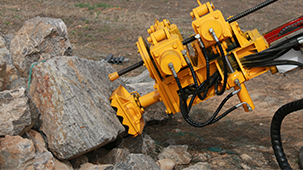
- How Self-Drilling Anchor Bolts Drill and Grout Simultaneously
- Time:2025-11-17From:This Site
- Discover how self-drilling anchor bolts drill and grout simultaneously, improving efficiency, stability, and safety in geotechnical projects. Learn the mechanism, installation process, advantages, and common applications.
- View details
-
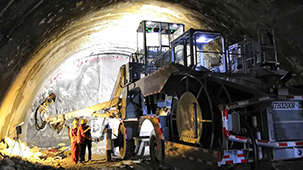
- Self-Drilling Pipe Umbrella vs. Advance Small-Diameter Pipes in Tunnel Support
- Time:2025-11-15From:This Site
- Compare self-drilling pipe umbrellas and advance small-diameter pipes in tunnel support. Learn their working principles, advantages, limitations, and real-world applications to choose the most effective pre-support solution for safe and efficient underground construction.
- View details
-
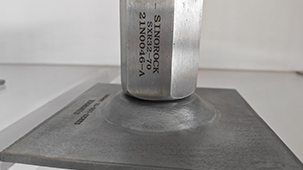
- How to Choose Stainless Steel Self-Drilling Anchor Bolts: A Complete Selection Guide
- Time:2025-11-12From:This Site
- Learn how to choose the right stainless steel self-drilling anchor bolts for tunneling and mining projects. Compare 304, 316L, and 2205 grades for durability and cost-efficiency.
- View details
-
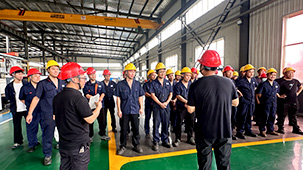
- Sinorock 2025 Quality Month | Strengthening Quality Foundations, Empowering Product Excellence
- Time:2025-08-13From:This Site
- Sinorock’s 2025 Quality Month, themed “Strengthening Quality Foundations, Empowering Product Excellence,” successfully concluded, reinforcing our commitment to superior product quality.
- View details
-
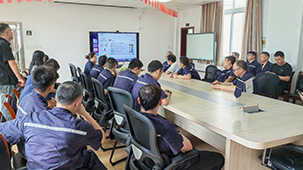
- Sinorock Safety Month 2025 | Everyone Speaks Safety, Everyone Can Respond
- Time:2025-07-03From:This Site
- Sinorock Safety Month 2025, centered on the theme "Everyone Speaks Safety, Everyone Can Respond - Spot Workplace Hazards," has wrapped up successfully!
- View details
-
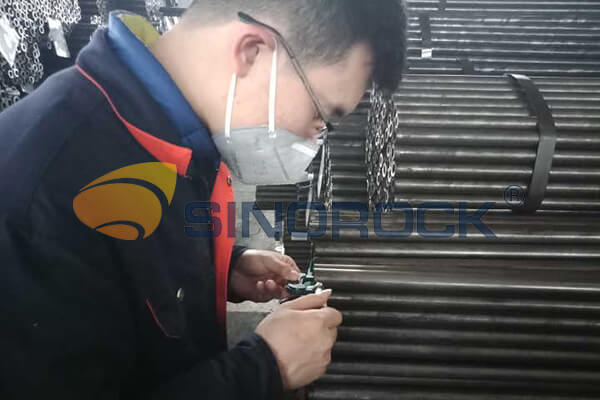
- Quality Control: the Vital Factor of A SDA Bolt Factory
- Time:2025-01-09From:This Site
- Sinorock’s comprehensive quality control system, from supplier management to outgoing inspections, ensuring the highest standards for self-drilling anchor bolts in construction.
- View details
-

- SINOROCK to Showcase Innovative Mining Solutions at Mining and Metals Central Asia 2025
- Time:2025-09-09From:This Site
- We are pleased to share that SINOROCK will participate in the Mining and Metals Central Asia 2025, taking place from September 17 to 19 at the Atakent International Exhibition Centre in Almaty, Kazakhstan. You can find us at Booth 11-231.
- View details
-

- Sinorock Invites You to Explore Proven Self-Drilling Anchor Bolt Solutions at bauma 2025
- Time:2025-03-07From:This Site
- From April 7–13, 2025, explore Sinorock’s Self-drilling anchor bolt solution at Booth C2.513/4 in Hall C2 of the Messe München Exhibition Center (Munich, Germany).
- View details
-
.jpg)
- SINOROCK to Attend EXPOMINA PERÚ 2024 in Lima, Peru
- Time:2024-08-10From:This Site
- Sinorock to Attend EXPOMINA PERÚ 2024 in Lima, Peru
- View details
 Download
Download 


